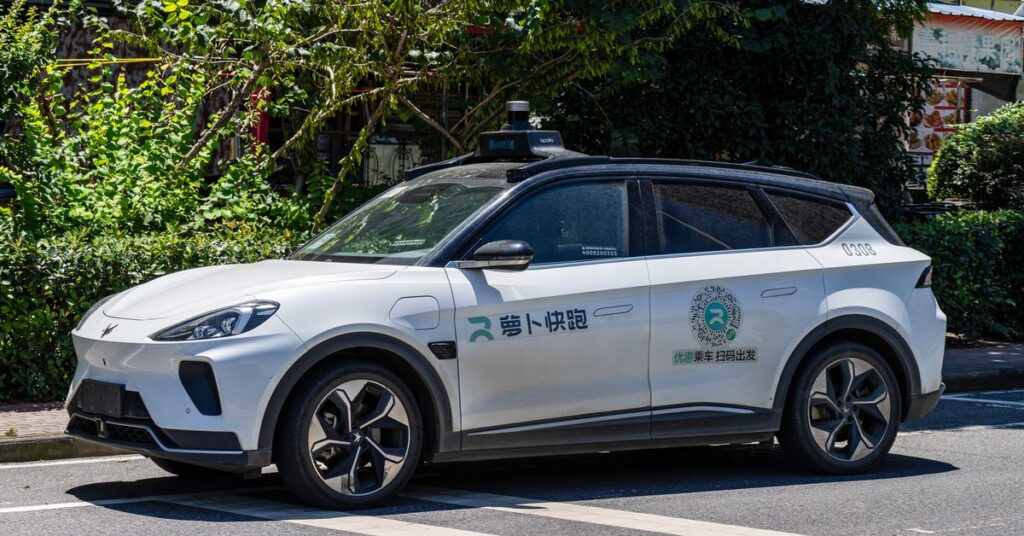Baidu’s robotaxi division, Apollo Go, just rolled out its latest robotaxi across multiple cities in China, and if stakeholders in the US aren’t nervous yet, they should be.
The RT6 is the sixth generation of Apollo Go’s driverless vehicle, which made its official debut in May 2024. It’s a purpose-built, Level 4 autonomous vehicle, meaning it’s built without the need for a human driver. And here’s the thing that should make US competitors nervous: adopting a battery-swapping solution, the price for one individual RT6 is “under $30,000,” Baidu CEO Robin Li said in an earnings call.
“All the strengths just mentioned above are driving us forward, paving the way to validate our business model,” Li added.
Adopting a battery-swapping solution, the price for one individual RT6 is “under $30,000”
With Alphabet’s Waymo operating in multiple cities in the US and Baidu deploying hundreds of vehicles in China, the world is now getting its first taste of an autonomous future. These vehicles are geofenced, meaning they can only operate in a select geographic area. And sure, they occasionally get confused or block traffic. But they’re real, and they’re growing in number.
But it’s Baidu’s achievements in cost-effectiveness that should have Waymo and other robotaxi operators a little uncomfortable. Because while the technology is growing more mature, the economics of a robotaxi business are still very much unproven.
We still don’t know the net effect of Baidu’s cost improvements. But bringing down the upfront cost of each individual vehicle to below $30,000 will go a long way toward improving the company’s unit economics, in which each vehicle brings in more money than it costs. There are still a lot of outstanding costs to consider, such as hardware depreciation and fleet maintenance, but from what Baidu is signaling, things are on the right track.
From the looks of it, the company is passing those savings along to its customers. Base fares start as low as 4 yuan (around 55 cents), compared with 18 yuan (around $2.48) for a taxi driven by a human, according to state media outlet Global Times. Apollo Go said it has provided 988,000 rides across all of China in Q3 2024 — a year-over-year growth of 20 percent. And cumulative public rides reached 8 million in October.
Photo by Smith Collection / Gado / Getty Images
With Waymo, we just don’t know. The company has spoken publicly about its efforts to reduce the costs of each vehicle by using fewer sensors. But its latest vehicle, Geely’s Zeekr, is likely going to be waylaid by tariffs on imports from China. A recent analysis from JMP found the company’s business in San Francisco to be profitable, while also estimating capital expenditures for the vehicle and sensor suite to be north of $150,000 per unit.
Lowering costs is going to be increasingly important for robotaxi companies as they look to expand to new cities. Alphabet doesn’t break out Waymo’s costs in its earnings report, but its “Other Bets” unit, which includes the robotaxi company, brought in $388 million in revenue in the third quarter of 2024, up from $297 million a year ago. But the unit’s losses held flat at $1.12 billion compared to $1.94 billion in the year-earlier period. Alphabet recently led a $5.6 billion funding round for Waymo to help it cover costs as it eyes its next phase of growth.
We know the technology works, but for driverless cars to have a real chance, we need to see evidence that it can make money, too.


